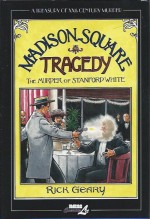
By Hal Foster (Fantagraphics Books)
ISBN: 978-1-60699-699-7
The stellar Sunday page Prince Valiant in the Days of King Arthur debuted on 13th February 1937, a luscious and luminous full-colour weekly window into a miraculous too-perfect past of adventure and romance, even topping creator Hal Foster’s previous impossibly popular comics masterpiece Tarzan.
The saga of noble knights played against a glamorised, dramatised Dark Ages historical backdrop as it followed the life of a refugee boy driven from his ancestral homeland in Scandinavian Thule who grew up to roam the world and attain a paramount position amongst the heroes of fabled Camelot.
Writer/artist Foster wove the epic tale over decades, as the near-feral wild boy matured into a paragon of chivalric virtue: knight, warrior, saviour, vengeance-taker and eventually family patriarch in a constant deluge of wild – and joyously witty – wonderment.
The restless hero visited many far-flung lands, siring a dynasty of equally puissant heroes and utterly enchanting generations of readers and thousands of creative types in all the arts.
There have been films, animated series and all manner of toys, games and collections based on Prince Valiant – one of the few adventures strips to have lasted from the thunderous 1930s to the present day (over 4000 episodes and counting) – and even here in the end times of the newspaper narrative cartoons, it continues to astound in more than 300 American papers. It’s even cutting its way onto the internet with an online edition.
Foster tirelessly crafted the feature until 1971 when illustrator John Cullen Murphy (Big Ben Bolt) succeeded him as illustrator. Foster continued as writer and designer until 1980, after which he retired and Cullen Murphy’s daughter Mairead took over colouring and lettering whilst her brother John assumed the writer’s role.
In 2004 the senior Cullen Murphy also retired, since when the strip has soldiered on under the extremely talented auspices of artists Gary Gianni and latterly Thomas Yeates with Mark Schultz (Xenozoic) scripting.
Before the astonishing illumination of dauntless derring-do recommences, Editor Brian M. Kane discusses, in amazing detail, the incredible tales of the creator’s pre-and-early comics days as an advertising artist and the impact of his “Mountie†paintings on early 20th century American ads in the fascinating Foreword essay ‘An Artist Nowhere Near Ordinary: Hal Foster’s Lord Greystoke of the Royal Canadian Mounted Police’.
This volume of sublime strips is also balanced by another erudite Kane piece at the back: describing the now forgotten entertainments phenomenon of the Silver Lady Awards bestowed annually by the fabled, prestigious but now forgotten “Bansheesâ€.
‘Hal Foster and the Other Woman’ reveals the story behind the story of King Features’ “Shadow Cabinet†and how Foster won his Silver Lady in1952 as well as noting many of his other testimonials such as the Rueben, the Swedish Academy’s Adamson Award and his election to our own Royal Society (for the Encouragement of Arts, Manufacturers and Commerce): an honour he shared with the likes of Charles Dickens, Benjamin Franklin and Stephen Hawking…
This 8th enormously entertaining and luxurious oversized (362 x 264mm) full-colour hardback volume reprints the pages from January 7th 1951 to 28th December 1952 (pages #726 to 829, if you’re counting) but before we proceed…
What has Gone Before: after the double christening in Camelot of his and Prince Arn of Ord‘s sons, Valiant was soon back in the saddle as an Arthurian troubleshooter, cleaning out a extortion-minded sorcerer’s den in Wales and picking up new squire Geoffrey – known affectionately as Arf – before heading North to Hadrian’s Wall and a brutally punishing and protracted siege by invading Picts.
It was nearly Val’s last battle…
When Aleta joined her dying husband he miraculously recovered. His forthright wife elected to take him back to his Scandinavian homeland so she dispatched Geoffrey to Camelot with orders for her handmaiden Katwin and nurse Tillicum to obtain a ship and meet her with baby Arn at the village of Newcastle…
Soon the group were bound for Thule, bolstered by the bombastic return of boisterous far-larger-than-life Viking Boltar: a Falstaff-like “honest pirate†who ferried the re-united extended family to Valiant’s harsh, cold homeland. Along the way Boltar found himself bitten by the love bug …
A chance meeting with an old cleric also disclosed the truth about Arf: the faithful squire had been forced from his home when his sire Sir Hugo Geoffrey took a new young bride. She didn’t want an annoying stepson underfoot but now she was gone and the boy could return home… if he wanted to…
Eventually the party reached the chilly castle of King Aguar and settled in for a winter of snowy rest and recuperation – although the temperatures could not cool Arf’s hot temper and propensity for finding trouble…
Aguar, meanwhile, had been seriously considering converting his rowdy Norse realm to the peaceful tenets of Christianity, but all the missionaries roaming his lands were cantankerous idiots preaching their own particular brand of faith – when not actively fighting each other.
Therefore when spring arrived he tasked his fully recovered son with a mission to Rome, beseeching the Pope to send proper priests and real teachers of the officially sanctioned religion to spread the Word of God.
No sooner had Val, Arf, doughty Rufus Regan and new comrade Jarl Egil set off, however, than vassal king Hap-Atla – seething from an old slight delivered to his deceased sire – rebelled, besieging Aguar’s castle. With manpower dangerously depleted the situation looked grim until wily Aleta took control, scoring a stunning triumph which shockingly contravened all the rules of manly warfare.
Valiant and his companions meanwhile had landed in Rouen and trekked onwards to the HolyCity, encountering thieves, murderers and worse as Europe, deprived of the Pax Romana, had descended into barbarism: reduced to a seething mass of lawless principalities ruled by greedily ambitious proto-emperors…
In one unhappy demesne the quartet dethroned a robber-baron but almost ended up wed to his unsavoury daughters, whilst in another Val encountered an alchemist-king who had accidentally invented an explosive black powder…
Exhausted, they eventually were welcomed at the castle of benevolent noble Ruy Foulke – but their good night’s sleep was spoiled when their host was attacked by villainous overlord Black Robert and his savagely competent forces…
This chronicle’s action commences as the visitors stoutly and resolutely defend their host against overwhelming force, with all combatants blithely unaware that Foulke’s daughter and Black Robert’s son are lovers. The youngsters almost sacrifice their lives to end the hostilities, and Valiant brokers an alliance which ends the bloodshed but has to leave quickly as his actions have deprived the invaders of much promised booty…
On the road again they missionaries encounter roving bands of barbarian reivers and take refuge in a monastery at the foot of the French Alps. The clerics offer to guide the quartet over the mountains to Italy, but are woefully short of the protective garments made from the cold-resistant Chamois, so Valiant goes off hunting the elusive antelope.
Trouble is never far from the Prince of Thule and his frozen safari brings him into conflict with another band of invading Huns or Tartars, which only ends when the capable northerner destroys them with an avalanche.
Properly kitted out, Arf, Egil, Rufus and Val are then taken over the horrific high passes, enduring ghastly arctic conditions before they reach the other side. Young Arf suffers most, and Val has to leave his crippled squire – whose feet have frozen – at a hospice in Torino whilst the remainder of his battered party carry on to Rome.
The EternalCity has become a cess-pit of iniquity since it was sacked by the barbarians and the Missionaries are given a constant run-around by greedy and duplicitous officials until Val discovers that the Pope has removed himself from the city and established a new home in Ravenna.
Although Valiant is still denied a meeting, the Pontiff appoints a committee which agrees to send true Christian teachers to icy Thule, but before details can be finalised the Prince is called back to Torino where Arf has taken a turn for the worse…
The Squire has lost the will to live, along with his left foot, and with all his chivalric ambitions destroyed is beyond consoling. In a powerful and moving sequence Valiant patiently brings the boy back from a fatal depression and sets him upon a new path: scholar and official historian of the kings of Thule.
Since the boy cannot handle the arduous trek back to Scandinavia, Valiant sends Egil and Rufus on ahead with the Pope’s team of missionaries and teachers by the most direct route whilst he accompanies Arf in a more leisurely and roundabout journey by ship.
En route the fierce man of war helps found the Christian Mission at San Marino before he and the still emotionally fragile lad board a Genoese trader. After crossing the Pillars of Hercules (Gibraltar), fresh passengers join them and the boy is utterly smitten by the demure charms of the beauteous Adele, daughter of wealthy Eastern lord Sieur Du Luc…
Luckily, Valiant has been schooling his former squire in the courtly skills of music and poetry…
The boy’s timorous wooing of the Mediterranean charmer pays off in a multitude of ways. His strength and confidence returns, Adele favours and returns his attentions and the amused and charmed sailors, delighted to have the burdensome (and occasionally pirate-plagued) journey eased somewhat, carve Arf a marvellous wooden leg which is so well-fashioned that he can throw away his crutches and walk as a man should…
When the vessel reaches England the boy takes time to reconcile with his father and introduce Adele so that the tricky and torturous process of making a marriage match may begin, whilst Valiant’s return to Camelot and joyous reunion with best friend Sir Gawain propels the two old comrades and devoted merry pranksters into an orgy of practical jokes and good-natured duels with their fellow knights…
Sadly the riotous times end too soon, as word comes from Aguar that Val should return to Thule with the utmost speed. Arranging for Arf to meet them en route, Valiant accepts Gawain’s offer to take ship from his own island kingdom of Orkney, but although his brother-in-arms is a fine fellow, the knight’s family are another matter.
Gawain’s mother Morgause is reputed a witch, whilst her other sons Agravaine, Gaheris and vile Mordred are little better than brutes and outright villains. Moreover the men of Orkney have little love for Scandinavians, being regular recipients of savage raids from assorted Northmen…
After Gawain scotches their plan to hold Valiant for ransom, the Prince proposes ending years on enmity with a trade agreement which will make the ancient nations allies and at last sets off for Thule to receive some shocking news: during the year he has been away Aleta has given birth to twin daughters.
Although the proud father is astounded and delighted, his firstborn son is not taking the loss of star-status well – as described in a charming sequence of comedic adventures starring Prince Valiant Arn in the Days of King Arthur…
Another crisis soon occurs however as Boltar, ignorant of Aguar’s new treaty, accidentally pirates the Orkney ship transporting Adele to Thule and suffers the wrath of his king and former comrades.
Imprisoned in Aguar’s castle, the confused and indignant Boltar is secretly released by Tillicum, but the old rogue, misinterpreting her gesture of love, does her the honour of kidnapping her – just as all his romantic forebears have – and is baffled when she escapes and pulls a knife on him…
Fed up and utterly desolate, Boltar and his crew continue to their base in the Shetlands, leaving Aleta to mend fences with the King and discuss with the disconsolate nanny how best Tillicum can get her man…
Boltar meanwhile has been thoroughly tested: Thule’s ancient rivals the Danes have amassed a fleet to attack Aguar and offer his now-disgraced “Good Right Hand†a share of the spoils and glory to join his ships to their armada…
Despite being vexed and tempted, the old pirate instead risks his life to warn Aguar of the sneak attack and after a spectacular campaign of seaborne slaughter accepts his long-delayed punishment. To keep him in line, Aguar makes Tillicum responsible for his continued good behaviour…
Idyllic weeks pass until Valiant, bored with inaction, drags his new biographer Arf into a patrol of the nation’s border, only to have them both washed away in a flash flood and forced to spend weeks fighting their way back to civilisation from the primitive northern wilderness.
There are gentler moments in the restless warrior’s life, such as the foolish wager he makes soon after his triumphant return that he can catch and train a hawk better than Aleta’s Merlin and his father’s Golden Eagle, but the days are mostly quiet in Thule… until at long last Rufus and Egil arrive with the Pope’s Christian missionaries.
Both have converted on the trip and Valiant and Aleta are overjoyed that their daughters Valeta and Karen can be baptised, but the task of taking the gospels to the devoutly warlike worshippers of Thor and Odin will be far from simple…
As the European set to, lecturing and building churches, Val and Rufus become involved in a cross-border water dispute and the Prince, in a rare moment of diplomacy, furnishes a solution that prevents rather than ends bloodshed.
No such opportunity arises when he is ambushed as he returns to Aguar. The arrow that nearly ends his life is fired in error, by a serf who mistakes the prince for the local under-chief, Sigurd Holem.
Once a noble and trusted deputy of Aguar, the Fief-holder has become a cruel tyrant: enslaving his own countrymen and defying any – including his Lord’s heir – to stop him.
Determined to avenge the cruelties of Sigurd, Valiant infiltrates the monster’s impenetrable citadel and, through cunning engineering tricks, brings the entire daunting edifice crashing into ruins…
The next few strips use the device of Arf’s growing biography to lavishly recapitulate many of Valiant’s greatest exploits, such as the overthrow of Sligon and restoration of Aguar to Thule or the haunting fate of doomed mountain outpost Andelkrag, before the tone switches again and little Arn is forced to face the stomach-churning consequences of being a “mighty hunter†when nanny Tillicum makes him confront the results of his firing arrows at animals…
The boy and his guardian take centre-stage in the next sequence too when Boltar returns home from another bloody and profitable voyage and jealous rivals at court attempt to humiliate the rowdy blowhard.
The plan is cruel and simple. When Tillicum rejoins her man at his home Vikingsholm she brings the wide-eyed Arn with her, where during a moment of quiet converse with Boltar the hunting-mad lad slips from her careful scrutiny and is abducted.
The kidnappers however have not reckoned on the Native American’s determination or tracking skills. After stalking them all alone for days, she rescues the boy just as the furious following Boltar catches up to her, and the conspirators have mere moments to regret their vile actions…
And when Valiant hears of the plot, he and Boltar then deal with the rest of the plotters in similar manner…
This volume’s stunning saga temporarily end with the opening movements of another epic extended story arc as the progress of the Christian missionaries leads Valiant – still far from a believer in the One God – to be targeted by Druids and Pagan warriors determined to crush the threat to their bombastic pantheon before it can take hold…
To Be Continued…
Rendered in a simply stunning panorama of glowing visual passion and precision, Prince Valiant is a non-stop rollercoaster of boisterous action, exotic adventure and grand romance; blending human-scaled fantasy with dry wit and broad humour, soap opera melodrama with shatteringly dark violence.
Beautiful, captivating and utterly awe-inspiring, the strip is a landmark of comics fiction and something no fan can afford to miss.
Prince Valiant and all comics material © 2014 King Features Syndicate. All other content and properties © 2014 their respective creators or holders. This edition © 2014 Fantagraphics Books. All rights reserved.










